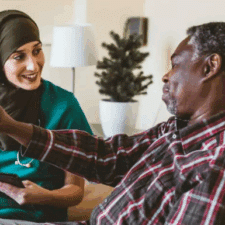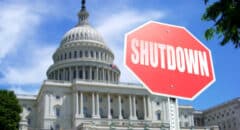
Wellness is everywhere on social media. From green powders and glow-up routines on Instagram to weight-loss hacks and “biohacking” trends on TikTok, health content is shaping the way millions of people think about their bodies.
But as more creators position themselves as “wellness experts,” a major question has emerged: Who is making sure that the advice we’re consuming is safe, accurate, and ethical?
The short answer: it’s complicated. A patchwork of agencies, platforms, and self-regulation programs exists—but enforcement is inconsistent, and audiences are often left vulnerable to misinformation. Let’s break down how regulation currently works, where it falls short, and what consumers can do to protect themselves.
The Current Regulatory Landscape
The FTC in the United States
In the U.S., the Federal Trade Commission (FTC) is the main authority overseeing influencer marketing. Influencers are legally required to disclose when they’re being paid to promote a product. The FTC’s endorsement guidelines state that posts must be “clear and conspicuous” about brand ties and that health claims must be truthful and supported by evidence.
Still, violations are widespread. A notable case involved the wellness tea brand Teami, which was fined one million dollars for deceptive health claims—including promises of curing cancer and rapid weight loss—promoted through influencers without proper disclosure.
Self-Regulation by Industry
Alongside government oversight, there are voluntary programs like the BBB National Programs and the National Advertising Review Board (NARB). These groups encourage brands to maintain ethical standards and handle disputes, but they do not carry the enforcement power of federal regulators.
International Efforts
Different countries have taken unique approaches to wellness influencer regulation.
- Australia: The Therapeutic Goods Administration (TGA) bans testimonials and before-and-after photos in wellness product promotions. They’ve warned influencers about improper cosmetic procedure promotions, though influencers often avoid fines that traditional advertisers face.
- India: The Consumer Affairs Ministry recently announced that wellness influencers must disclose their professional qualifications. If they are not trained medical professionals, they must make this clear when giving advice.
- France: Draft legislation proposes criminal penalties—including fines up to €300,000 and potential jail time—for influencers who promote unsafe cosmetic surgeries, fail to disclose sponsorships, or alter images without labeling them.
- United States (proposed): Lawmakers have introduced a bill that would empower the FDA to fine influencers up to $500,000 for misleading drug promotions, especially around weight-loss medications like Ozempic.
These examples show that while global attention to influencer regulation is growing, consistency and enforcement remain limited.

Platforms and Their Role
Social media platforms sit at the center of the wellness influencer ecosystem, and their policies can make—or break—the spread of misinformation. Over the past few years, many have introduced stricter rules to protect users, especially younger audiences, from predatory health marketing.
Meta (Instagram and Facebook), for example, now bans cosmetic and weight-loss ads targeting users under 18, requires visible disclaimers on sponsored content, and restricts posts that could encourage negative body image. These changes reflect growing pressure from regulators and parents concerned about the impact of idealized health content on teenagers’ mental health.
TikTok has also taken action, suspending accounts that promote dangerous cancer “cures” or encourage disordered eating practices. But TikTok’s algorithm—which rewards viral, emotionally charged content—often allows harmful advice to spread to millions before moderators step in. This reactive approach raises questions about whether platforms are acting quickly and consistently enough to truly protect users.
The larger issue is that platforms are both regulators and beneficiaries of influencer marketing. Wellness content drives engagement, which drives ad revenue, creating an inherent conflict of interest. As long as platforms profit from trending health advice, critics argue, their incentive to enforce strict standards will remain limited.
In short, platforms have made progress in setting policies—but enforcement remains inconsistent, leaving users to navigate a digital wellness space that is still risky and unevenly policed.

When Advice Becomes Dangerous
It’s important to note that not all wellness content is harmful. Many influencers share valuable lived experiences around fitness, nutrition, or mental health. The danger arises when anecdotal advice crosses into medical territory.
Examples include:
- Promoting unproven “cures” for cancer.
- Endorsing extreme diets without medical oversight.
- Misleading endorsements of supplements or injections.
- Falsely claiming professional expertise.
The case of Belle Gibson, the Australian influencer who fabricated a cancer diagnosis and claimed she cured it with diet, illustrates the worst-case scenario—her falsehoods reached millions before being exposed.
Should Influencers Be Held Accountable?
This is the core ethical debate. Advocates for stricter regulation argue that influencers are not simply sharing opinions—they’re acting as advertisers. With millions of followers, their words can influence public health behaviors just as much as traditional ads.
Some experts propose:
- Credential disclosure requirements: Audiences should know whether advice is coming from a medical professional or a lifestyle enthusiast.
- Licensing or certification: A baseline level of competence for influencers offering health-related content.
- Harsher penalties: Larger fines for misinformation or failure to disclose paid partnerships.
- Platform responsibility: Stronger algorithms to prioritize evidence-based content and amplify credible experts.
Without these measures, influencers may continue spreading misinformation with little consequence, while audiences bear the risks.
How to Protect Yourself as a Consumer
Until regulation catches up, the responsibility often falls on viewers to vet what they consume. Here are some steps to stay safe:
- Check credentials – Is the influencer a licensed healthcare provider or citing reputable sources?
- Look for disclosures – Paid content should be marked clearly (#ad, #sponsored).
- Beware of extremes – Quick fixes, miracle cures, and “one-size-fits-all” solutions are red flags.
- Cross-check advice – Compare with guidance from organizations like the CDC, WHO, or your own healthcare provider.
- Notice platform patterns – If content disappears or accounts get suspended, it may signal that misinformation was flagged.
Wellness influencers occupy a powerful space between personal storytelling and public health communication. While some share genuinely helpful practices, others cross into deceptive or harmful territory.
Right now, regulation is a patchwork—some countries and platforms are making progress, but enforcement is uneven. The future likely holds stricter oversight, especially as lawmakers begin to treat wellness influencers like advertisers with legal obligations.
In the meantime, accountability, transparency, and critical thinking are essential. Influencers must step up with honesty, platforms must enforce their own rules, and consumers must remain vigilant.
Because at the end of the day, wellness should empower—not mislead.








